Imagine stepping into your backyard and being greeted by a serene oasis of stones, plants, and textures that seamlessly blend with nature’s elements. Creating a rock garden is not just an exercise in aesthetic appeal but also a testament to your skill and creativity as a gardener. Whether you’re a novice excited to dip your toes into the world of gardening or a seasoned green thumb seeking a fresh challenge, rock gardens offer an enticing blend of beauty and practicality. This type of garden provides a low-maintenance, drought-resistant solution that can transform even the most uninspiring plot of land.
In this article, we will guide you through the 12 essential steps to crafting your own rock garden masterpiece. From selecting the perfect location to choosing the right plants and understanding the art of stone placement, you’ll gain the knowledge and confidence to create a space that reflects both your style and the local environment. You’ll learn how to work with varying textures and colors, bringing harmony and balance to your garden design. By the end of this journey, you’ll be equipped with the tools and inspiration needed to cultivate a rock garden that serves as a peaceful retreat and a stunning focal point in your landscape.
Choosing the Perfect Site
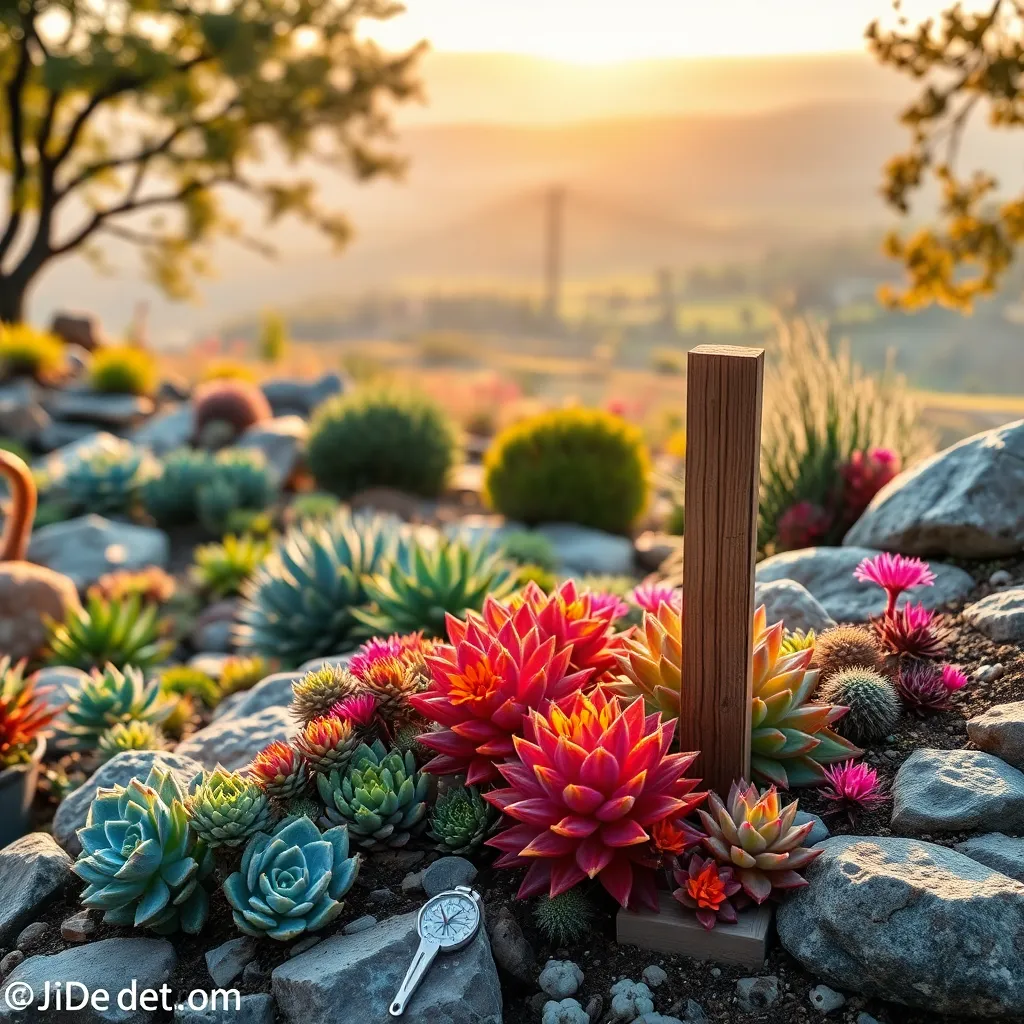
When selecting the site for your rock garden, consider areas in your yard that receive full sun to partial shade. Most rock garden plants thrive in these conditions, which mimic their natural alpine habitats.
It’s crucial to choose a location with well-draining soil, as rock garden plants generally dislike wet feet. If your chosen spot retains water, consider amending the soil with gravel or sand to improve drainage.
For beginners, starting with a smaller space can make the process more manageable and enjoyable. As you gain confidence, you can gradually expand your rock garden to cover larger areas.
Advanced gardeners might explore creating terraces or slopes within their rock garden to add visual interest and capitalize on natural water drainage. This technique also allows for varied planting zones, accommodating plants with different sun and water needs.
Designing Your Rock Garden Layout

When designing your rock garden layout, consider the natural contours of your landscape to create a harmonious blend with the environment. Start by assessing the slopes and elevations to determine where rocks and plants will naturally fit best.
Placement of rocks is crucial; they should mimic natural rock formations. Begin by arranging larger stones as the backbone of your design, then fill in with smaller rocks and gravel for a cohesive look.
Choose a mix of plants that thrive in rocky terrains, such as succulents, alpine plants, and groundcovers. Ensure you select species suited to your climate, noting that many rock garden plants prefer well-drained soil and full sun.
For a more dynamic layout, incorporate different heights and textures by layering your plants. Use taller plants like ornamental grasses at the back and cascading varieties like creeping thyme at the front to create depth.
Selecting Suitable Rock Types

When selecting rock types for your rock garden, it’s crucial to consider both aesthetics and functionality. Opt for rocks that complement the surrounding landscape and provide stability for the plant roots.
Granite, sandstone, and limestone are popular choices due to their durability and natural appearance. Each type of rock offers different drainage and weathering properties, which can influence plant growth positively or negatively.
Granite, for example, is excellent for areas with heavy rainfall, as it provides good drainage. In contrast, limestone can increase soil alkalinity, making it ideal for plants that thrive in less acidic conditions like lavender and thyme.
For those looking to add a touch of color, consider using sandstone, which is available in various hues. Its porous nature can help retain moisture, beneficial for plants that prefer slightly moist conditions, such as mosses and ferns.
Preparing the Groundwork

Before laying down any rocks, it’s crucial to prepare the soil properly to ensure your rock garden thrives. A well-draining soil mix is essential, as most plants suitable for rock gardens prefer dry conditions.
Start by removing any existing vegetation and debris from the area. This will not only make the groundwork cleaner but also reduce competition for nutrients and water, allowing your rock garden plants to flourish.
Once the area is cleared, consider the topography and make any necessary adjustments to create gentle slopes or mounds. These variations in elevation can enhance drainage and add visual interest to your garden design.
For an optimal soil foundation, mix equal parts of sharp sand, topsoil, and leaf mold or compost. This combination mimics the natural habitat of alpine and drought-tolerant plants, providing the right balance of nutrients and drainage.
Additionally, you might want to add a layer of gravel or small stones on the surface before placing your rocks. This extra layer can help prevent soil erosion and stabilize the rocks, keeping your garden neat and tidy.
Creating Natural Drainage Systems
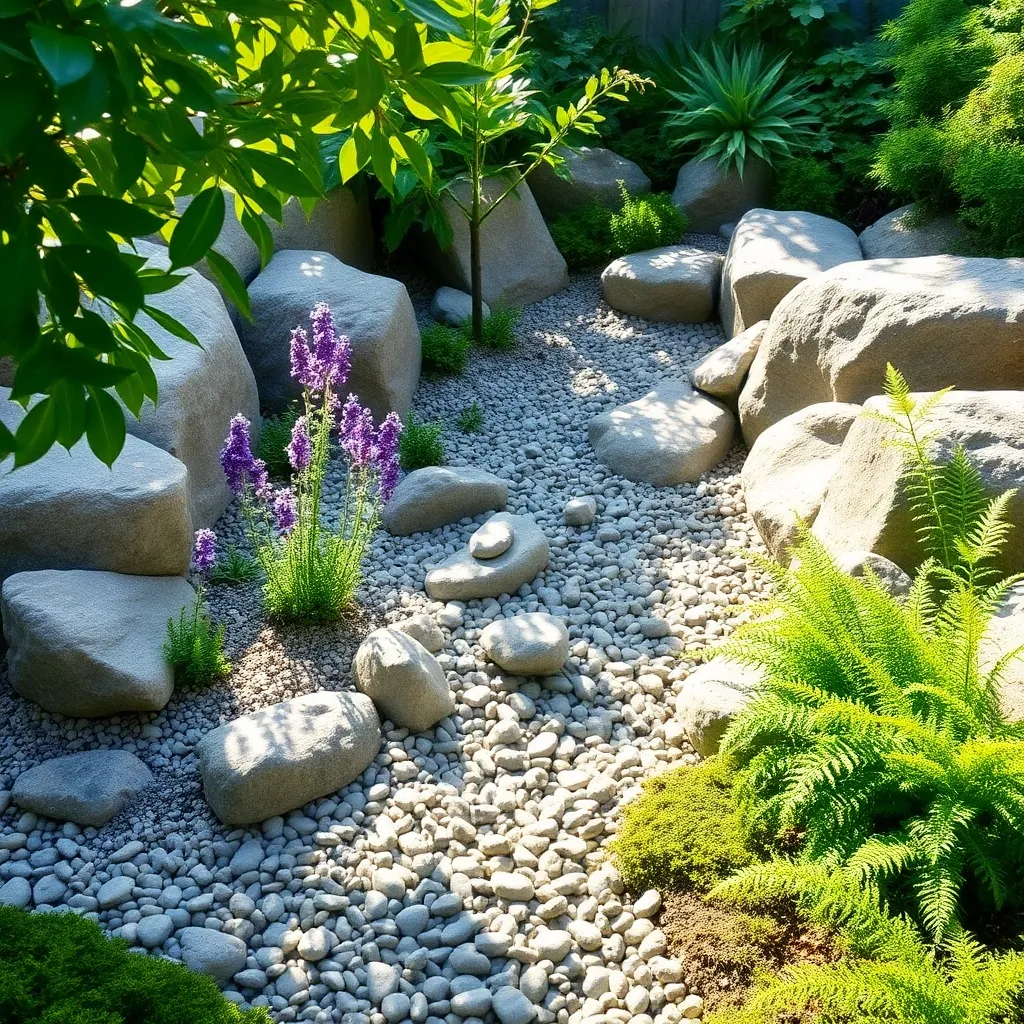
Creating a natural drainage system is essential for a successful rock garden, as it helps prevent waterlogging and root rot. Start by evaluating your garden’s natural slope and water flow patterns, which will guide you in designing an effective drainage solution.
Begin by incorporating a layer of coarse gravel or crushed stone beneath the topsoil, ensuring excess water can filter through easily. This technique mimics natural rocky terrains where water flows freely, providing an excellent foundation for your rock garden.
Consider building a small French drain by digging a trench, lining it with landscape fabric, and filling it with gravel before covering it with soil. This method is particularly effective for gardeners dealing with heavy clay soils, which tend to retain water.
To enhance drainage further, use plants that naturally thrive in well-drained conditions, such as sedums, alpine asters, and thyme. These plants not only tolerate dry conditions but also add visual interest and texture to your rock garden.
Picking Ideal Plant Varieties
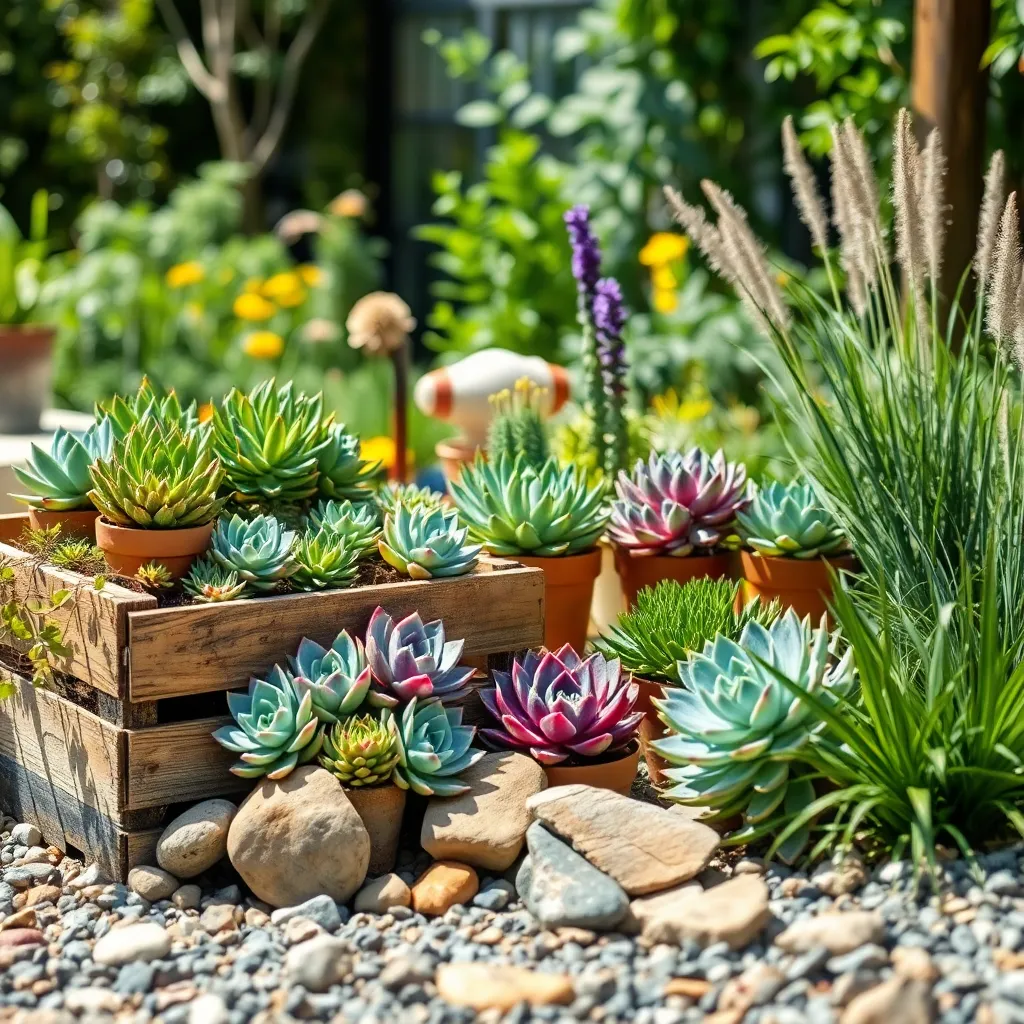
When selecting plants for your rock garden, consider varieties that thrive in well-drained soil and can withstand drier conditions. Succulents, alpine plants, and certain perennials are excellent choices because they naturally adapt to rocky environments.
It’s important to assess your area’s climate and microclimate to choose the most suitable plants. For example, if your garden receives intense sunlight, opt for sun-loving species like sedums and ice plants that thrive in such conditions.
For gardeners in regions with colder winters, consider hardy perennials such as Thyme and Saxifraga, which can endure frost. These plants will not only survive harsh conditions but also add vibrant textures and colors to your rock garden throughout the seasons.
Enhance your rock garden’s appeal by mixing plant heights and textures. Pairing low-growing ground covers with taller grasses or flowering plants creates visual interest and a more natural look.
Arranging Rocks and Plants

Arranging rocks and plants in your rock garden is both an art and a science, offering endless possibilities for creativity. Start by selecting rocks that complement your chosen plant varieties and the overall landscape, considering both color and texture to achieve balance.
Position larger rocks as the foundational elements, creating a natural-looking terrain that mimics nature. Place these rocks strategically to enhance drainage and prevent waterlogging, which is crucial for the health of your plants.
Once the rocks are in place, plant your selections in groupings that mirror their natural habitats. Ensure that sun-loving plants are positioned in areas with ample sunlight, while shade-tolerant varieties find shelter under larger rocks or in naturally shaded spots.
For beginners, using a mix of evergreen and seasonal flowering plants can provide year-round interest and structure. Meanwhile, advanced gardeners might experiment with using rocks to create microclimates, allowing for the cultivation of a wider variety of plant species.
Incorporating Decorative Elements
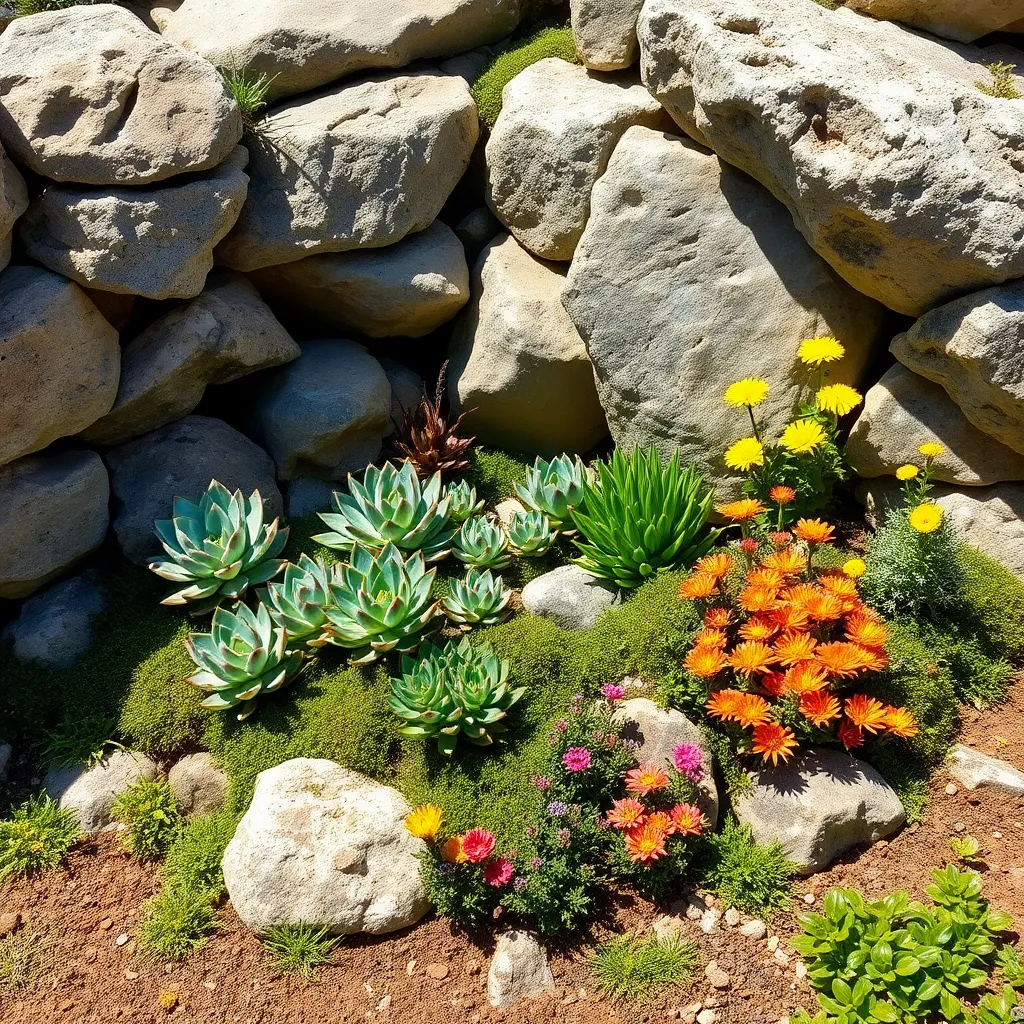
Incorporating decorative elements can significantly enhance the visual appeal of your rock garden. Consider adding features like garden sculptures, water fountains, or even a small birdbath to create focal points that draw the eye.
Strategically placed decorative elements can complement the natural beauty of your rocks and plants. Opt for materials that blend well with the natural environment, such as stone, wood, or metal, to maintain a cohesive look.
For those looking to add a dynamic element, consider integrating a small water feature. A gentle trickle of water not only adds a soothing sound but also encourages a diverse range of wildlife, creating a more vibrant garden ecosystem.
Lighting can also play a crucial role in highlighting the beauty of your rock garden during dusk or nighttime. Use solar-powered LED lights to illuminate paths or spotlight significant features without adding to your energy bills.
Ensuring Proper Watering Practices
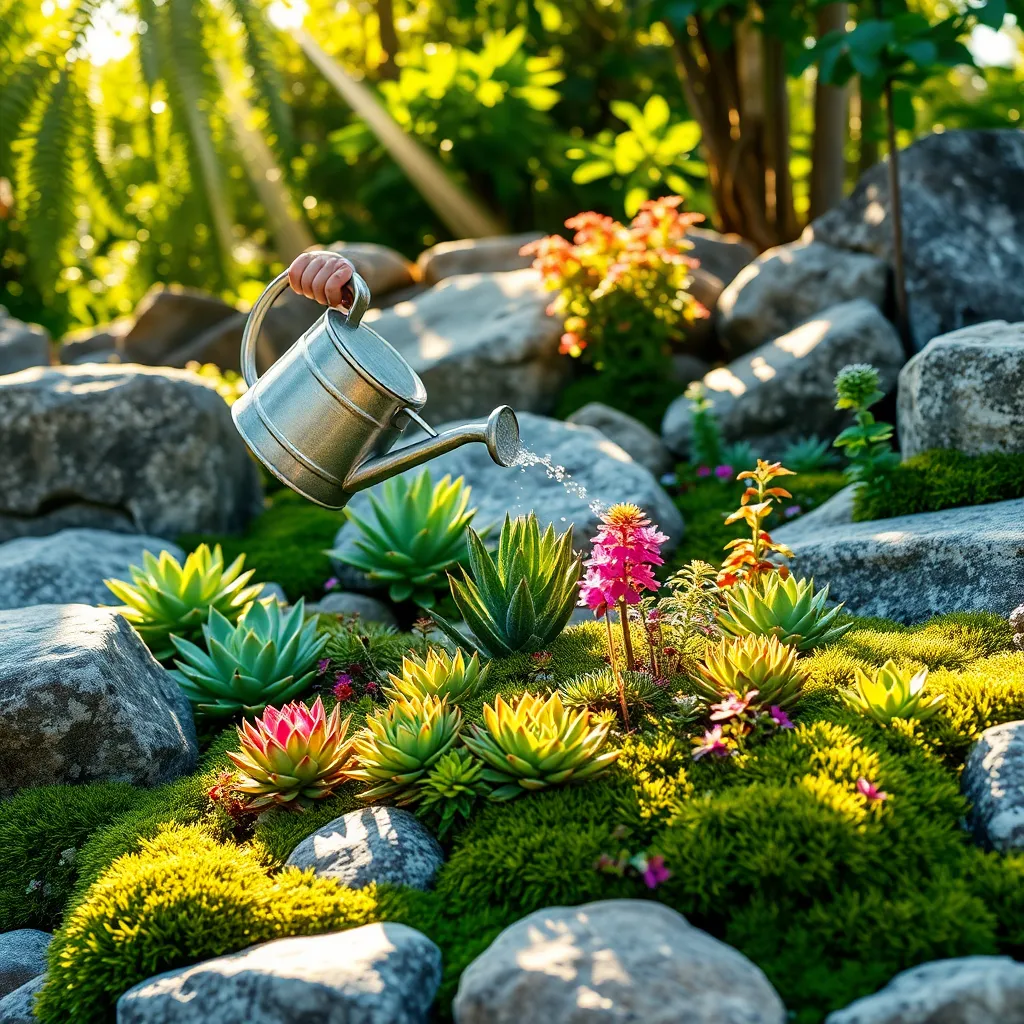
Proper watering is crucial to maintaining a thriving rock garden, as it helps plants establish strong roots in well-drained soil. Start by assessing the drainage of your rock garden—use a mix of gravel and sand to ensure that water doesn’t pool around the roots.
For beginner gardeners, a good rule of thumb is to water deeply but infrequently, allowing the top inch of soil to dry out between waterings. This technique encourages deeper root growth, making plants more drought-resistant over time.
Early morning is the ideal time to water, as it allows moisture to reach the roots before the sun intensifies, reducing evaporation. For those looking to optimize water usage, consider installing a drip irrigation system, which delivers water directly to the plant base with minimal waste.
More experienced gardeners might experiment with incorporating drought-tolerant plants, such as sedums and succulents, which require less frequent watering. Always check plant-specific needs, as some species may have unique requirements to thrive in rocky environments.
Maintaining Soil Quality

To maintain soil quality in your rock garden, it’s crucial to start with the right soil mix. A combination of sandy soil, small stones, and organic matter like compost creates a well-draining environment that mimics natural rocky landscapes.
Regularly check the pH level of your soil, as achieving a neutral to slightly acidic range is ideal for most rock garden plants. You can use a simple pH testing kit, available at most gardening stores, to ensure your soil remains within this range.
Incorporate organic fertilizers into your soil maintenance routine to provide essential nutrients. Compost or well-aged manure can be lightly mixed into the soil’s surface, enhancing its fertility without disrupting the roots of established plants.
Beginner gardeners should focus on observing plant growth and soil condition to make necessary adjustments. For more experienced gardeners, consider rotating different organic amendments seasonally to maintain nutrient balance and prevent soil depletion.
Seasonal Care and Upkeep

Seasonal care plays a crucial role in the success of your rock garden, ensuring plants thrive throughout the year. Spring is an ideal time to inspect your garden for any winter damage and make necessary repairs or adjustments to the rocky structures.
During spring, consider replanting or replacing any plants that didn’t survive the winter. Choose drought-resistant species such as sedums and sempervivums to maintain a resilient garden that requires less water.
In the summer, watering is vital, but it should be done carefully to prevent over-saturation. Water early in the morning to reduce evaporation and allow plants to absorb moisture before the heat of the day.
As fall approaches, it’s essential to prepare your rock garden for the colder months. Trim back perennials and remove fallen leaves to prevent mold and disease, while adding a light layer of mulch to protect plant roots.
Winter care involves checking for and removing any heavy snow build-up on plants, which can cause damage. Consider using burlap screens to shield sensitive plants from harsh winds and frost.
For advanced gardeners, integrating a mix of evergreen and deciduous plants can provide year-round interest and structure. Experiment with different textures and colors to create a dynamic display that changes with the seasons.
Expanding Your Rock Garden Ideas
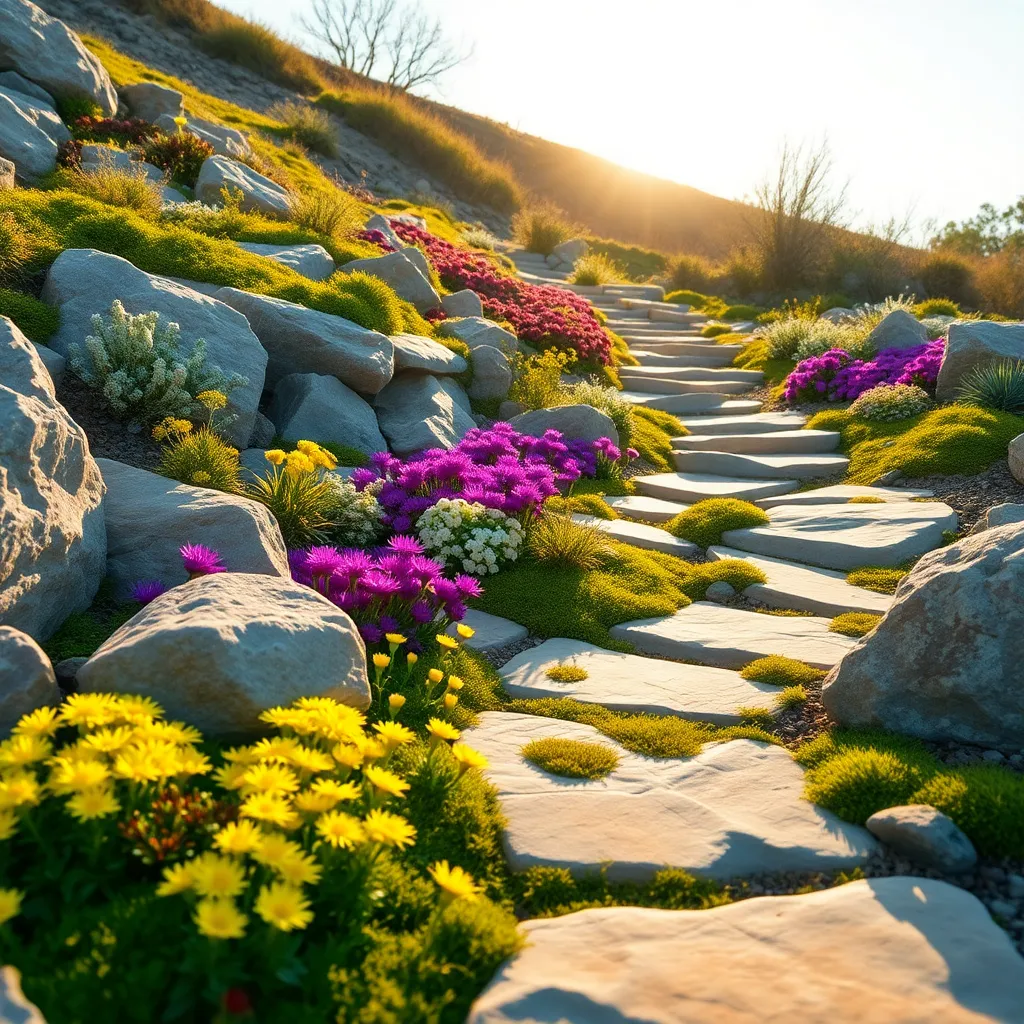
Expanding your rock garden involves embracing the natural beauty of stone and the diverse plant life that thrives among it. Consider incorporating a variety of drought-tolerant plants like succulents and alpine species, which not only thrive in rocky conditions but also add texture and color.
Pay attention to the soil composition, ensuring it is well-draining to prevent root rot, which is crucial for plant health in a rock garden. Mix sand, gravel, and compost into your soil to create a hospitable environment for a wide range of plants.
When arranging plants, think about their mature size and spread to avoid overcrowding as they grow. Staggering plant heights and bloom times can also help create visual interest throughout the seasons.
Advanced gardeners might experiment with creating different microclimates by strategically placing rocks to provide shade or shelter from the wind. This technique can expand the range of plants you can successfully cultivate, offering more creative freedom in your design.
Conclusion: Growing Success with These Plants
As we wrap up ’12 Essential Steps to Creating a Rock Garden,’ we’ve explored the vital elements that form the bedrock of any thriving relationship. From establishing open communication and nurturing trust to appreciating differences and prioritizing time together, each principle is a stone in the garden of love. We’ve uncovered the importance of empathy, compromise, and mutual growth, and highlighted the need for setting healthy boundaries, practicing gratitude, and embracing change. Each concept serves as a crucial component in cultivating a resilient and harmonious partnership.
Now, take a moment to reflect on these insights and choose one area to focus on today. Perhaps it’s initiating a heartfelt conversation or planning a meaningful activity together. Implementing even one step can start transforming your relationship dynamics.
Before you leave, bookmark this article as your go-to guide for nurturing your relationship garden. Let it be a reminder that with consistent care and attention, your partnership can flourish beautifully.
Remember, the seeds of love you plant today will grow into the strong, vibrant connections of tomorrow. Embrace the journey, and watch your relationship thrive like a well-tended rock garden.







